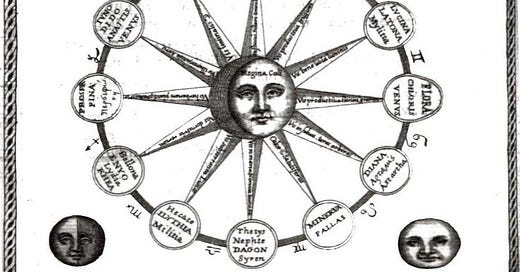Modernism often produces obscure poetry because it denies the existence of absolute truth. Without a fundamental truth to reveal, poetry is relegated to presenting a series of images for the reader to supply the meaning of the text. Hart Crane and the pioneers of modernist poetry achieved this with words alone, but later Cummings and the “concrete” poets, heavily under the influence of cubism and modernist movements in visual art, did so through typographical forms of the poem itself.
But modernism has assumed other forms. William Butler Yeats, Nobel laureate, ranks as one of the titans of early modernist poetry. On its surface, Yeats’s poetry seems like a more formal cousin to that of Hart Crane or any of the Imagists – a series of inscrutable images meant to derive their meaning from their impression upon each individual reader.
If such were the case, this essay could serve as a footnote to a more general criticism of modernist poetry. But Yeats’s approach to his poetic images is entirely different, and in many ways unique among modernist poets. Unlike his contemporaries, Yeats assigned the images in his poetry very definite, specific meanings, all of which originated in a complex set of spiritual beliefs he developed from various occult teachings.
For all its symbolism, Yeats’s poetry is no less modernist. Its modernism just denies eternal truth in its own unique way. Its symbolism is occult, which means it is discoverable to only a select enlightened few. The meaning it confers on the poetry is personal to the poet, and carries meaning only insofar as the reader is prepared to accept his system of symbols and the worldview they comprise. Those who do not are left in the dark, the unenlightened masses.
This essay explores the occult as claimed secret, superior knowledge not universally accessible, Yeats’s deep interest in the occult and involvement in organizations that practiced its rites, and how indelibly his occult involvement influenced his poetry. Finally, it analyzes Yeats’s elaborate system of occult symbols in his work as intentional obscurantism, meant to restrict the full understanding of his works only to those “adepts” who have been initiated into Yeats’s own occult world.
Before delving into the subject, however, it is important to address a potential objection at the outset. Critics of the New Criticism mindset will doubtlessly insist on reading each Yeats poem as a self-contained entity with all meaning to be derived from the text itself. Any reference to Yeats’s personal background or beliefs, they will assert, are entirely irrelevant to the text itself. Whatever usefulness this approach has, it cannot seriously be considered useful in approaching the work of a poet like Yeats, who imbued his works with a system of symbols developed from and inextricably linked to his personal spiritual beliefs. These, in turn, can only be properly understood by understanding Yeats’s personal background and his involvement with schools of occult teaching from which he borrowed many of his symbols.
Keep reading with a 7-day free trial
Subscribe to The Chained Muse to keep reading this post and get 7 days of free access to the full post archives.




